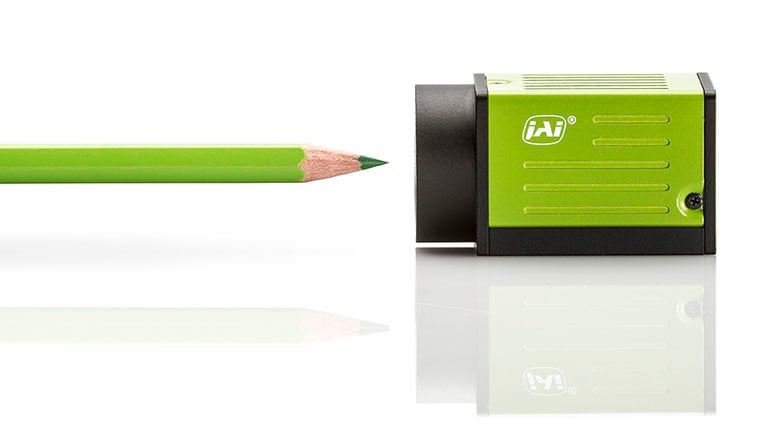
When choosing the right camera for your machine vision application, you first have to consider if an area scan or a line scan type of camera is the best option. In case an area scan camera is the right choice for your application and you need to incorporate color into your machine vision system, there are two different area scan options to consider for color imaging: Bayer mosaic and prism-based, multi-sensor technology. This blog explains in what situations a Bayer color camera is the best choice.
An area scan camera is typically used when the items that are being inspected, sorted, or analyzed have definite shapes or boundaries. In other cases line scan cameras are more effective. For example, when you need to inspect long, continuous items, or a variety of items that have many different lengths or sizes.
When you decide an area scan camera is the best option for your situation, you’ll have the choice to incorporate a Bayer color camera or a multi-sensor prism color camera.
Bayer cameras rely on a predefined pattern of color filters which overlay the pixels on a camera’s imager. Calculating the red, green, and blue (RGB) color value for any specific pixel requires a process of interpolation which looks at surrounding pixels to estimate the values for the two colors not captured by that pixel’s filter.
Multi-sensor prism cameras utilize high-quality prisms with dichroic filter coatings to split the incoming light to three separate imagers based on spectral wavelengths. The three precisely-aligned sensors provide an independent red, green and blue intensity value for each pixel in the image with no interpolation required.
Need help selecting the right color camera for your application?
Download our Tech Guide: Color Imaging, and walk through the steps of selecting the right color imaging camera for your application.
In what situations is a Bayer color camera the best option?
- When the price of the camera is an important decision factor: Bayer color cameras are far less expensive than prism cameras. Users can get a good, basic 5-megapixel Bayer area scan camera for less than half the price of a 3.2-megapixel prism camera.
- When your machine vision system does not require exceptional color accuracy: Because Bayer cameras must “interpolate” (i.e., estimate) two of the three color values for each pixel, there can be a noticeable variance between the RGB values that are calculated by the Bayer algorithm and the “true” color values in the target scene. If colors in your application must be accurately captured and compared against predefined reference colors, the lower accuracy of Bayer data could create problems. But if the use of color only requires relative accuracy, i.e., how one color in the image compares to another, a Bayer camera should be sufficient.
- When your application does not require subtle color differentiation: In addition to lower absolute color accuracy, Bayer filters also block a portion of the light falling on each pixel, resulting in an overall lower level of effective sensitivity. These factors typically reduce the ability of a Bayer camera to distinguish between very subtle color shades. However, for applications where relatively coarse color differentiation is all that is required, a Bayer camera may be more than adequate while allowing the user to take advantage of the lower price point.
- When your machine vision system does not require a high level of spatial precision: As noted, the interpolation process used by a Bayer camera causes an overall loss of detail as it applies to edges, lines and small printing within images. If the system you’re designing does not require exceptional spatial precision, or if you are amenable to the higher cost and processing overhead of using a higher resolution camera, a Bayer area scan camera can still be the right choice for your application.
Need help selecting the right color imaging camera for your application?
This video describes the differences between 3-sensor color cameras compared to cameras with Bayer color filters. View our short video to learn how you can achieve higher productivity with your color inspection systems.
